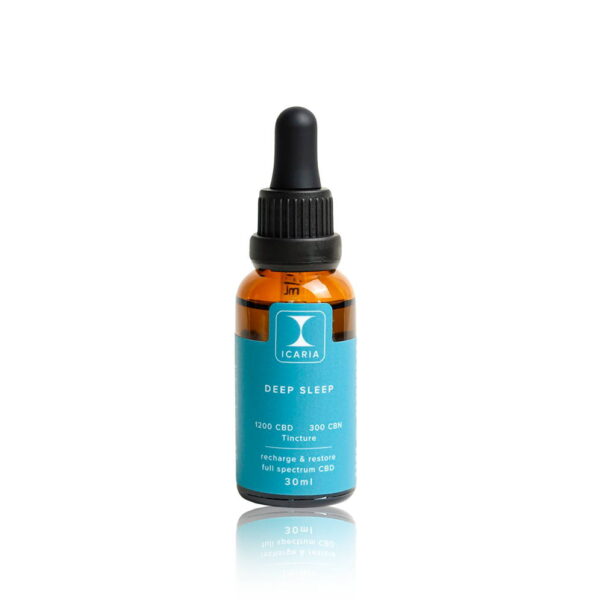CBD Works, But What About the Other Cannabinoids?
We know that CBD works to relieve many symptoms. We use it to reduce pain, and we know it can even help with chronic, treatment-resistant ones. CBD can also help boost mood and promote better sleep. It also helps relax tired muscles and increase energy.
CBD has many therapeutic uses, and its popularity has earned it a big niche in the cannabis space. But what about the other cannabinoids? Do they also offer the same health benefits as CBD? This article will explore the other known cannabinoids and their effects on the human body.
Tetrahydrocannabinol or THC
CBD’s popularity is second only to THC. This cannabinoid is what made cannabis famous in the first place.
THC is the main psychoactive cannabinoid found in cannabis plants. It binds to the cannabinoid receptor type 1 (CB1R) very well, which is why it can easily lift mood, relax the body, and increase appetite.
However, its activation of the CB1R also results in the euphoric, mind-altering high associated with cannabis use. The more THC docks on the CB1R, the stronger the psychoactive effects.
When THC overstimulates the CB1R, it can induce side effects like increased anxiety, hallucination, paranoia, memory loss, etc.
Is THC good or bad?
THC isn’t just psychoactive but it’s also addictive. So, the more you use cannabis products with high THC content, the higher the risk of developing tolerance, dependence, and addiction.
But THC also has many therapeutic potentials.
It produces powerful analgesic and anti-inflammatory effects. It can also help ease anxiety, depression, and stress. THC can also help kill cancer cells and prevent their spread. It can even help control nausea and vomiting caused by chemotherapy drugs and improve appetite.
Combined with CBD, THC can help enhance CBD’s beneficial effects.
Cannabinol or CBN
CBN is a cannabinoid that comes from the degradation of THC. This cannabinoid is formed when THC degrades or is exposed to light, air, and heat.
Is CBN also psychoactive?
Yes, this cannabinoid is actually psychoactive, but its psychoactive effects are only about 25% of THC’s potency. It can also activate the CB1R and produce mind-altering, psychoactive effects.
Of all the cannabinoids though, CBN is the most sedating. A report even claims that a low 2.5 to 5 mg of CBN is equivalent to 5 mg to 10 mg of diazepam.
In addition to its sedating effect, CBN also reduces pain and inflammation. it also improves appetite and decreases seizures. CBN is also known to kill cancer cells and promote healthy bones.
Cannabigerol or CBG
CBG is one of the most interesting cannabinoids found in cannabis plants. Known as the mother of all cannabinoids, researchers found that most of the known cannabinoids come from CBG, specifically its acidic precursor called CBGA or cannabigerol acid.
As CBGA matures and degrades, it converts into CBG. However, some of them also convert to the acidic precursors of other cannabinoids. For example, CBG transforms into CBDA, which later becomes CBD. it also becomes THCA, which becomes THC.
CBG is a non-psychoactive cannabinoid like CBD. And like CBD, it also has anti-inflammatory as well as painkilling effects. CBG is also known to promote brain health by decreasing anxiety and depression.
Tetrahydrocannabivarin or THCV
THCV, studies say, also has some psychoactive effects like THC and CBN. Its psychoactive effects become more pronounced at higher doses. But unlike THC, it produces more of a milder and smoother high.
More than just its psychoactive effects though, THCV also has therapeutic effects. Not only can it reduce the symptoms of depression and anxiety, but it also can help control pain and swelling. It also relaxes the muscles and may relieve muscle spasticity. This cannabinoid may also help with diabetes and obesity.
Cannabidivarin or CBDV
CBDV is a non-psychoactive cannabinoid. It doesn’t produce psychoactive or mind-altering effects nor can it increase addiction risk.
Similar to CBD and THC, CBDV is said to have anti-seizure effects. Not only does it have the ability to reduce the severity of seizures but the frequency as well. According to a study, it has the potential to help with Rett syndrome. This is a severe neurodevelopmental disorder that causes debilitating physiological as well as behavioral symptoms.
Cannabichromene or CBC
Another non-psychoactive cannabinoid, CBC also comes from CBGA. On its own, CBC also produces analgesic as well as anti-inflammatory effects. It’s also known to protect the brain and promote neurogenesis or the formation of new brain cells. Some studies also show that CBC has anti-cancer properties.
Cannabicyclol or CBL
CBL is also an interesting cannabinoid. Similar to CBN, this cannabinoid also didn’t come from the degradation of CBGA. Instead, CBL is formed when CBC degrades. But unlike CBN though, CBL isn’t intoxicating and doesn’t produce mind-altering effects.
There’s little research done on CBL but some suggest that it also has anti-cancer and anti-inflammatory properties.
Delta 8 THC
Delta 8 THC is also a psychoactive cannabinoid. And like CBN, it also comes from THC when it degrades or gets exposed to light, heat, and air.
This cannabinoid has quickly gained popularity in the cannabis space, especially in the US. Delta 8 THC’s psychoactive effects are smoother and milder, but unlike THC, it doesn’t produce as many side effects like anxiety and paranoia.
Delta 8 THC also has therapeutic effects. It can help reduce pain and inflammation, and it can also ease symptoms of anxiety and depression.
These are just some of the other cannabinoids that the plant produces. Of those listed here, only THC is well-researched and well-studied by scientists.
All cannabis plants (which includes hemp) produce these cannabinoids, but their levels vary. Cannabis, for example, usually contains a higher amount of THC than CBD. Hemp, on the other hand, typically produces more CBD than THC, which is why it isn’t psychoactive.
Are the other cannabinoids safe to use as well?
Compared to other pain medications like opioid-based drugs, cannabinoids are generally safer than opioids. Unlike opioids, cannabinoids don’t increase overdose risk.
We need to do more studies on these lesser-known cannabinoids though to understand how they work inside the body. We also don’t know much about their side effects. But the few studies we have shown promising therapeutic effects.







